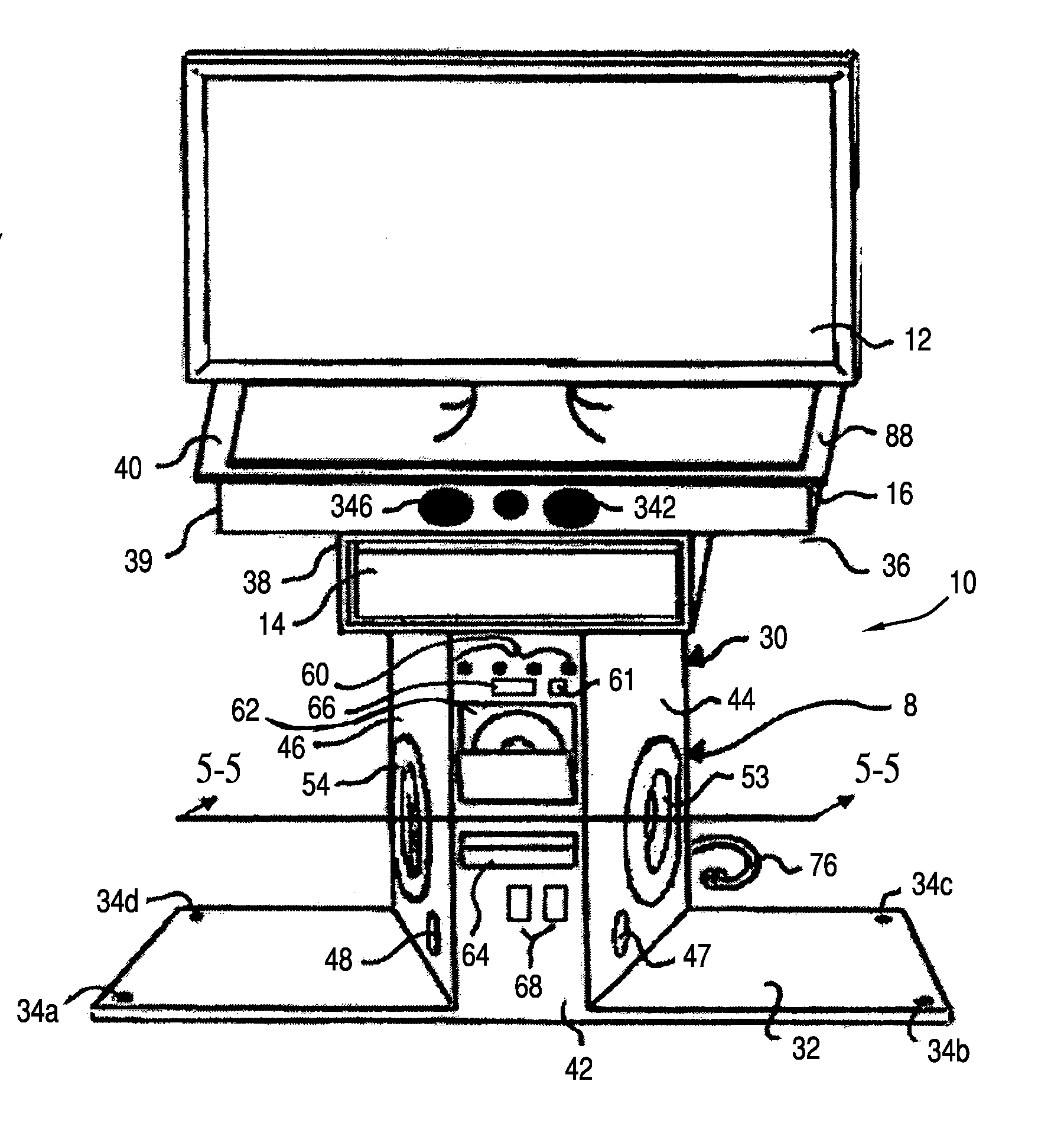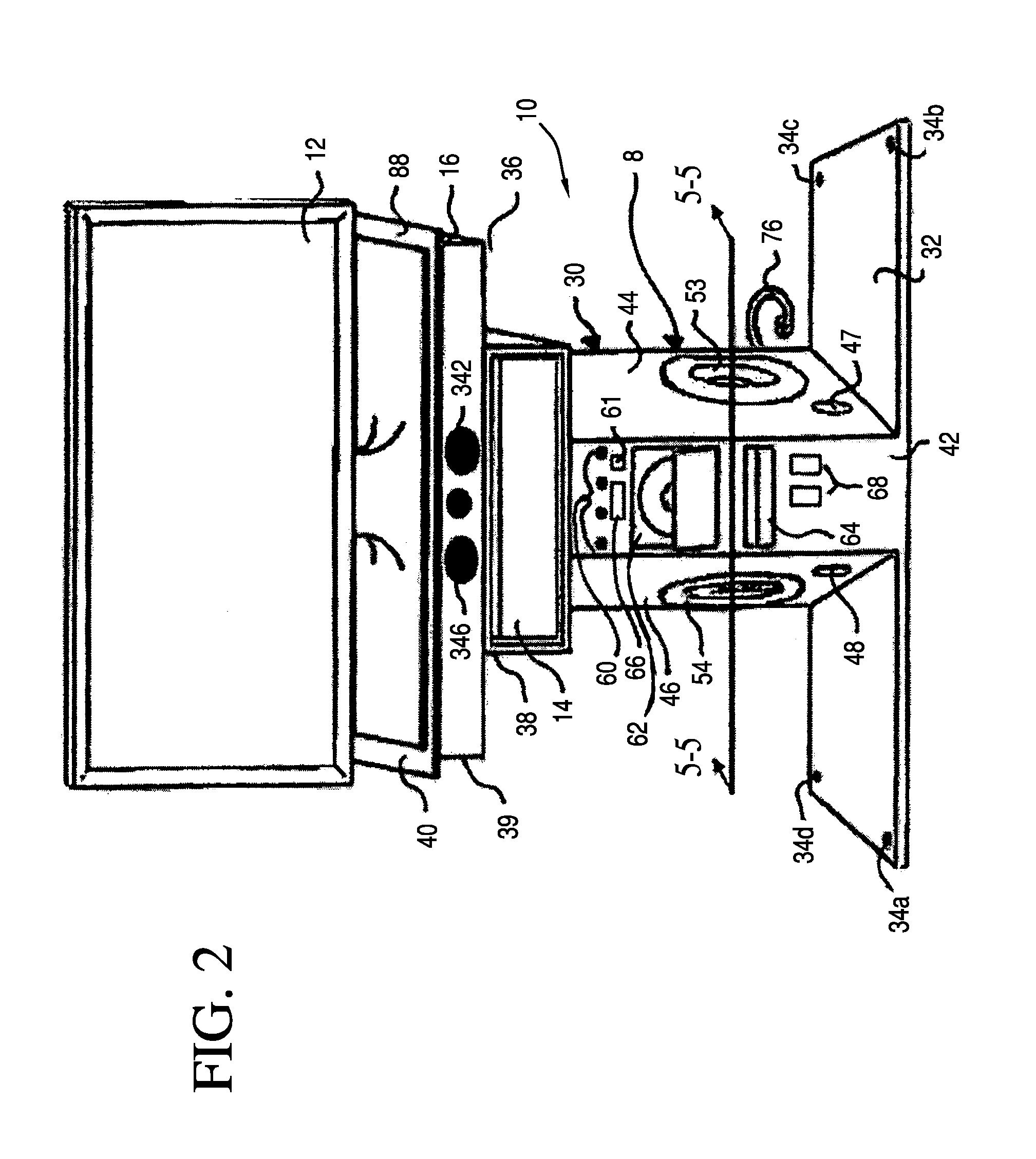Method and support structure for integrating audio and video components
a technology for audio and video components, applied in the direction of stereophonic systems, stereophonic arrangments, electrical apparatus, etc., can solve the problems of complicated consequences, significant confusion, and disadvantages of integrated systems, and achieve the effect of simplifying the conventional practice of providing a number of components
- Summary
- Abstract
- Description
- Claims
- Application Information
AI Technical Summary
Benefits of technology
Problems solved by technology
Method used
Image
Examples
Embodiment Construction
[0046]Referring to FIGS. 1-18, a home entertainment environment 1 located in a room 2 is described in general with respect to FIG. 1. A user 4 may utilize a remote control unit 6 to control operation. The home entertainment environment 1 comprises the apparatus, which creates an entertainment experience for the user 4. The home entertainment environment 1 comprises a home entertainment system 10 and may comprise a video display 12. The video display 12 may be part of a television set including tuners and an amplifier. Alternatively, the video display 12 could comprise a video monitor. The home entertainment system 10 is housed in a modular base 8. The home entertainment system 10 comprises components which provide different functions and which are integrated. Particular modules in the home entertainment unit 10 are described in further detail with respect to FIGS. 5 and 6. At the present time, commonly provided components include a radio tuner, digital video disc (DVD) player / record...
PUM
 Login to View More
Login to View More Abstract
Description
Claims
Application Information
 Login to View More
Login to View More - R&D
- Intellectual Property
- Life Sciences
- Materials
- Tech Scout
- Unparalleled Data Quality
- Higher Quality Content
- 60% Fewer Hallucinations
Browse by: Latest US Patents, China's latest patents, Technical Efficacy Thesaurus, Application Domain, Technology Topic, Popular Technical Reports.
© 2025 PatSnap. All rights reserved.Legal|Privacy policy|Modern Slavery Act Transparency Statement|Sitemap|About US| Contact US: help@patsnap.com



